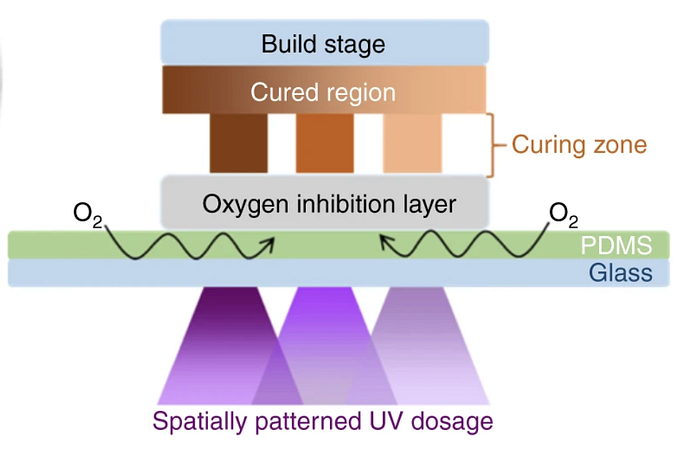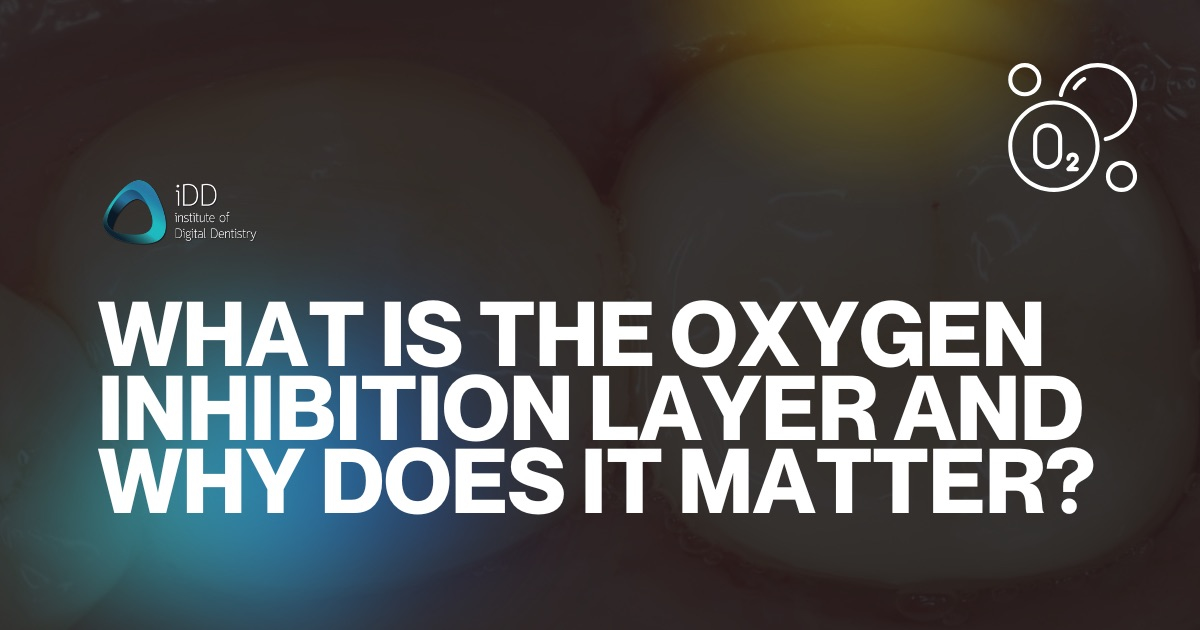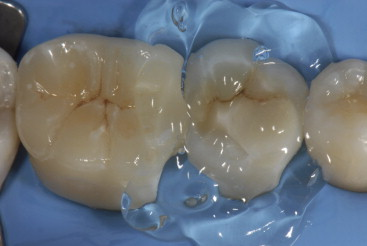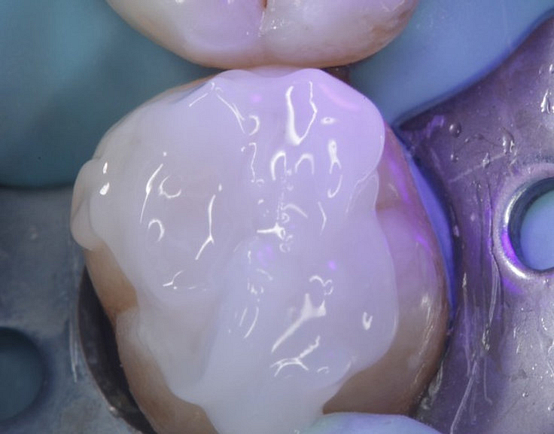You've probably seen it on social media - a dentist carefully applying a clear gel over a composite restoration before curing. Maybe you wondered if it was just for show, or perhaps questioned their isolation technique.
The truth is, there's solid science behind that seemingly odd step. It's all about managing the oxygen inhibition layer, and understanding this concept can significantly improve your composite restorations - and is important for 3D printing.
What Exactly Is the Oxygen Inhibition Layer?
The oxygen inhibition layer (OIL) is a thin, uncured surface layer that forms on composite resins during light-curing.
When composite polymerizes, oxygen molecules in the surrounding air interfere with the free radical polymerization process. This interference prevents complete curing at the surface, leaving behind unpolymerized monomers and creating a soft, sticky layer typically 10-40 micrometers thick.
When the Oxygen Inhibition Layer Works in Your Favor
Between composite increments, the OIL can actually be your friend.
The unpolymerized monomers in this layer create an ideal bonding surface for subsequent composite additions. When you place fresh composite over an uncured surface, the new material can chemically bond with the existing layer through inter-diffusion of monomers. This creates a stronger, more cohesive restoration compared to bonding to a fully cured surface.
This is why many techniques recommend not fully curing intermediate layers in large restorations; you want some uncured resin present for optimal layer adhesion.
Where the Oxygen Inhibition Layer Becomes Problematic
On the final surface of your restoration, the OIL presents several challenges that can compromise long-term success.
The uncured resin creates a softer surface that's more susceptible to wear, particularly in high-stress areas. This can lead to premature restoration failure and the need for earlier replacement.
Aesthetically, the resin-rich surface is more prone to staining and discoloration over time. Patients may notice color changes that affect the restoration's appearance.
There's also potential for soft tissue irritation, as unpolymerized monomers can be cytotoxic in laboratory studies. While clinical evidence for tissue irritation remains limited, eliminating this layer removes any potential risk.
The Glycerin Solution - Simple Yet Effective
Applying glycerin gel before the final cure creates an oxygen-free environment that allows complete polymerization. The process is straightforward but requires careful technique and a additional step in the workflow.
Apply a thin, even layer of glycerin over the composite surface before final curing. The glycerin acts as an oxygen barrier, preventing interference with the polymerization process. After curing, thoroughly rinse away the glycerin with water. You'll notice the surface feels harder and less tacky compared to conventionally cured composite.
Studies consistently show that this technique increases surface hardness and improves the degree of conversion, resulting in better physical properties.
Managing OIL in 3D Printed Restorations
The oxygen inhibition layer becomes even more critical when working with 3D printed dental restorations.
Unlike traditional direct composite placement, printed restorations have complex geometries and surface textures that make OIL management more challenging.
For 3D printed crowns, bridges, and other restorations, the uncured surface layer can significantly impact fit, surface quality, and biocompatibility. The irregular surfaces created during printing provide more surface area for OIL formation.

Several specialized techniques address this challenge effectively. Submerging printed restorations in glycerin before final curing creates a complete oxygen-free environment around all surfaces, including complex undercuts and internal geometries that would be difficult to coat manually.
For appliances like 3D printed splints and nightguards, proper OIL management becomes even more critical due to prolonged oral contact and the need for smooth, biocompatible surfaces.

submerging a prnted splint in glycerin
Nitrogen curing chambers represent a widely considered 'gold standard' for eliminating oxygen during the curing process. These systems flood the curing environment with inert nitrogen gas, completely eliminating oxygen interference and ensuring thorough polymerization throughout the restoration. For a detailed comparison of different UV curing options and their effectiveness, specialized curing equipment can make a significant difference in final restoration quality.
Some practices achieve similar results by submerging restorations in water during curing, as water contains significantly less dissolved oxygen than air. While not as effective as glycerin or nitrogen, this approach offers a practical alternative for practices without specialized equipment.

nitrogen generator units are becoming more common in dentistry
Clinical Significance - Does It Really Matter?
The clinical impact of managing OIL varies depending on the restoration location and patient factors. High-stress areas like occlusal surfaces benefit most from OIL elimination. For anterior restorations where aesthetics are paramount, removing the oxygen inhibition layer can improve long-term color stability and surface quality.
In areas with tight tissue contact, eliminating potentially irritating unpolymerized monomers provides an additional safety margin. However, proper isolation, bonding technique, and material selection remain far more critical to restoration success than OIL management alone.
For 3D printed parts, managing the OIL is critical for any appliance that will be in the mouth for extender periods of time. Think splints, dentures, aligners, and any restoration like crowns, veneers, onlays etc. Without managing the OIL, you risk uncured resin leaching into the mouth.
Composite manufacturers continue developing materials with improved polymerization characteristics and reduced oxygen sensitivity. Some newer formulations incorporate alternative photoinitiator systems or include oxygen scavengers to minimize OIL formation during normal curing. As these technologies mature, managing the oxygen inhibition layer may become less critical, but understanding the underlying science remains valuable.
The Bottom Line
Understanding and managing the oxygen inhibition layer represents good clinical practice backed by solid materials science. The glycerin technique is simple, inexpensive, and can measurably improve restoration properties.
However, don't let OIL management distract from fundamental techniques. Proper tooth preparation, isolation, bonding, and incremental placement remain the foundation of successful composite dentistry.
Consider incorporating OIL elimination into your protocol for cases where long-term durability and aesthetics are paramount. Your restorations, and your patients, will likely benefit from the attention to this often-overlooked detail.
What's your experience with managing the oxygen inhibition layer? Have you noticed differences in restoration longevity or patient satisfaction?
Share your thoughts in the comments below.



